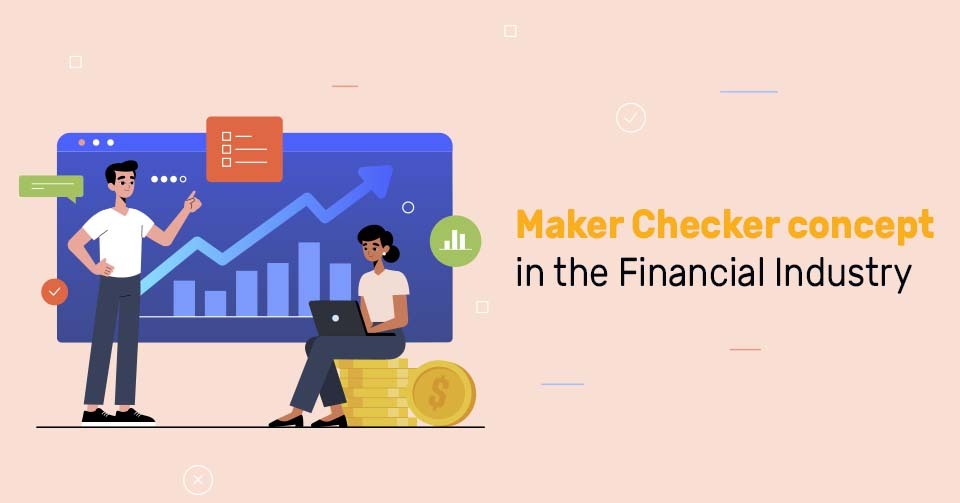
Maker Checker Concept in Financial Industry
A country grows with the growth of its finance industry. According to the State of Fraud Benchmark report, 71% of companies’ financial companies have been spending increasingly on their fraud mitigation processes, whereas a report stated that over USD 500K was lost by financial institutions in 2022 through lack of supervision resulting in frauds and scams. The finance industry has always been in search of better quality and security solutions. One such concept applied in the financial sector is the maker-taker concept.
Understanding the Maker-Checker Concept in the Finance Sector
The ‘dual approval concept’ or “maker checker concept’ is a vastly understated banking concept. The maker-checker concept does not change the base process but adds some simple steps to enhance the quality of the task. In this process, two people are required to make one transaction successful.
A successful example of the maker checker concept is 1ViewTask, where you can assign, analyze, review, and approve tasks, all on the same platform. 1ViewTask is a task management tool that has increased the efficiency of a team on a project using the maker checker concept as its default workflow. To understand more you can visit our website!
In the banking process, a person generates an application for a transactional process; this person is the maker of the entire process. Now, there is a second person in the bank who reviews the transaction application and forwards it to the next person. The third person in the process approves the transaction after checking it thoroughly; this is the checker. In other words, to make a third-party’s transaction, two people are required to upgrade the quality of the task which results in better security.

1ViewTask- Default Workflow (Maker Checker Concept)
Why is the maker-checker concept important for the finance industry?
Adding an extra person to the transaction process is a better way of enhancing quality. Improved quality can be accomplished through the second person which not only keeps the process free of any manual errors but also helps in securing the process. The financial industry is working more on pen and paper, so dual approval can eliminate unnecessary lags by impacting business process management. There have been numerous benefits due to the process of execution.
Reduction in Scams:
The extra pair of eyes has reduced the probability of scams by adding a second person who oversees the entire process before approval.
Internal Frauds:
Financial institutions, especially banks, have been experiencing fraud and scams due to the fault of their employees. The internal team can be kept under surveillance with the addition of this second person to the transaction process.
Manual Errors:
Two people reviewing the same transaction can help avoid unnecessary errors missed by one. Financial transactions are sensitive processes, and there is no scope for silly errors.
How does the Maker Checker Concept work in the finance sector?
The Maker Checker concept is being vastly adopted by financial institutions, especially banks. In banks, the maker or the customer puts up a transactional request, and a person registers it in the ledger register. The details and application, once completed by this bank authority, are sent to the second person in the bank (the checker), who goes through the entire application and verifies it before approval.
These days, banks have started working online. On the online platforms, the first authority at the bank enters the data into the computer, which is automatically transferred to the general ledger supervised by the checker, and hence the entire process is carried out after the checker’s approval. These days, generally, the bank enables the two-step authorization process for the customers without any extra charges.
The number of approvers of a transactional procedure can be changed in different financial institutions according to the number of transactions. The institution can decide the amount bracket and the number of approvers for different levels of transactions. In these times of online transactions, we can track the entire process online. Using the transaction dashboard of the financial institution, a maker can see who has approved the transaction and at what stage it is, whether it is approved or unapproved at that stage.
The client always has leverage over the financial institutions. They can always disable the settings through their portal and change the settings, or they can visit the financial institution to understand the process better.
Four Eyes for a Sound Financial Industry
The financial sector is often troubled by fraud, and the entire industry needs to strengthen control and security measures to perform efficiently. The dual approval or maker checker concept, if applied strategically and in a well-regulated manner, can improve the overall quality of the processes. It saves the company from scams, fraud, and even money laundering. It has been an efficient practice in quality improvement and risk management.
If your financial institution is crumbling under security threats and low-quality processes, adapt this process to the business. You can reduce business risk and get control of your business with a few simple implementations.
Signup now and for more information, follow us on LinkedIn, Instagram, Facebook, Twitter, and Quora



